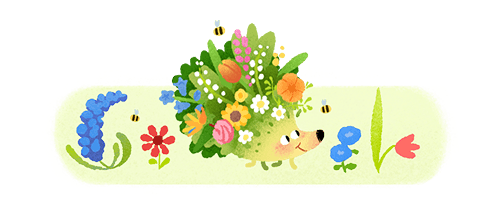Spring Season: Google Doodle celebrates equinox
The spring equinox - the day marking that spring has arrived - is being celebrated with a Google Doodle.

After a cold winter - with snow and ice that shut vaccine centres - coupled with a national lockdown, spring is being welcome with open arms by many.
The spring equinox - the day marking that spring has arrived - is being celebrated with a Google Doodle.
The day finally means spring is blooming is on 20 March this year, and Google is celebrating with a flora laden home screen, complete with a happy hedgehog.
What is the spring equinox and why does it happen?
Twice a year, in March and September, the centre of the visible sun is directly above the earth’s equator. In March, this signals the start of spring for the northern hemisphere, and denotes the official start of Autumn in September.
Read more:
Netflix crackdown on password sharing, explained
Scientists believe they know where mysterious ‘alien spacecraft’ comet actually came from
Nasa releases mysterious Mars audio of ‘high-pitched scratching noise’
The Royal Observatory in Greenwich explains that “at two points in the year the Sun will illuminate the northern and southern hemispheres equally. These are known as the equinoxes: the autumnal equinox and vernal or spring equinox.
“It’s the moment at which the plane of Earth’s equator passes through the centre of the Sun’s disk, or the moment that the Sun passes the celestial equator. On these dates, there are approximately equal hours of daylight and darkness.”
This is the official start of Spring, which means longer days and warmer temperatures are on the way soon.
As well as marking the start of the season - the blooming of flowers and the birth of adorable animals, and the official end of winter - the equinox has significant cultural meaning.
For example, Jewish Passover usually falls on the first full moon after the spring equinox in the northern hemisphere, Easter Sunday is celebrated on the first full moon of the equinox, and Japan holds the equinox as a public holiday.
What happens next?
Whilst there are spring and autumn equinoxes, there are summer and winter solstices, where midsummer is marked with the shortest night and longest day (and vice versa for mid-winter). This is written into our 2021 calendars for 21 June.
The autumn equinox will occur on 22 September.
Subscribe to Independent Premium to bookmark this article
Want to bookmark your favourite articles and stories to read or reference later? Start your Independent Premium subscription today.

Join our commenting forum
Join thought-provoking conversations, follow other Independent readers and see their replies